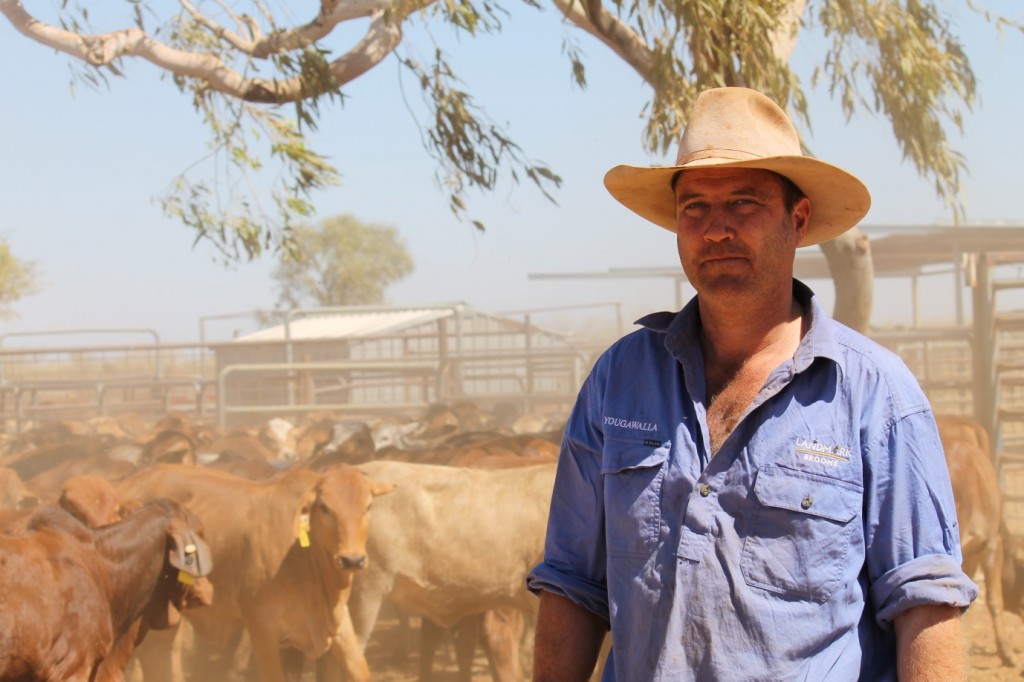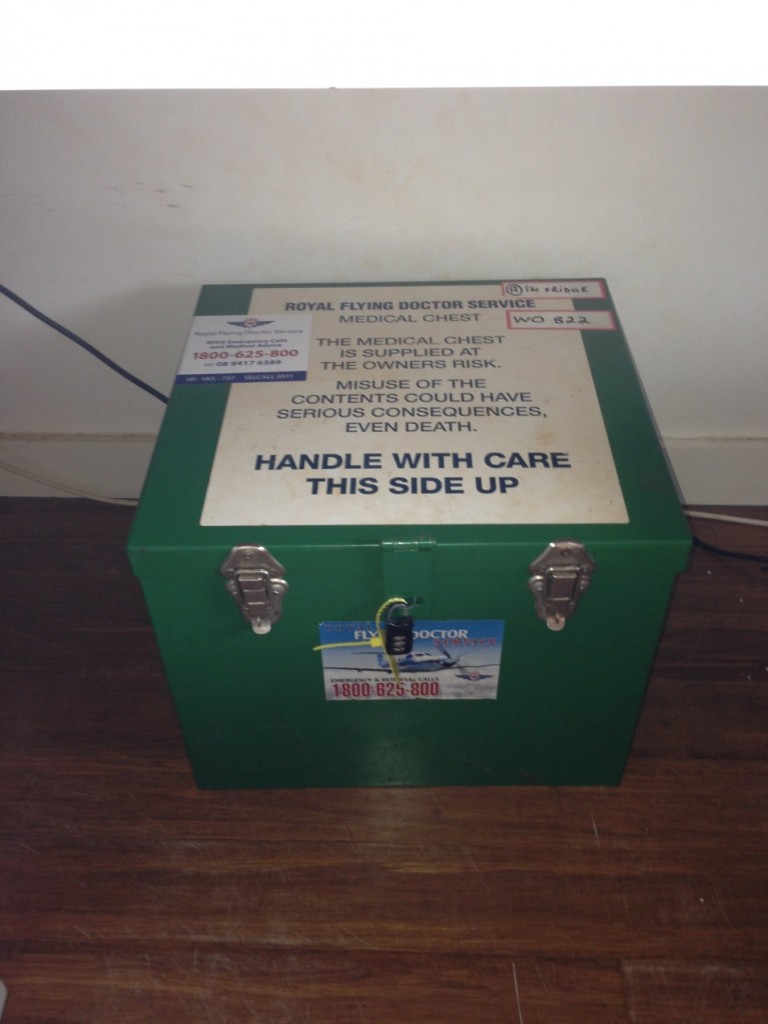When it all goes wrong, call the flying doctors
Host: Yougawalla Pastoral Co.
Written by Haydn Sale – Manager, Yougawalla Pastoral Co.
My name is Haydn Sale. My wife Jane and I live and work at Yougawalla Station. Jane and some of the other women from local pastoral stations came up with the great idea for this blog, to give people an insight into the day to day operations and dramas of life on a remote cattle station.

We are immensely proud of producing food to help feed people all around the world. Some of the destinations for our beef are Indonesia, the Philippines, Malaysia, Brunei, China, Vietnam, Israel, and other Middle Eastern countries amongst others. The work here on the station is often hot and hard with at times quite ridiculous challenges thrown at you – markets, weather, and the challenges of isolation, but we love it and could not imagine doing anything else. When you weigh up the rewards of working in a beautiful place with animals and great committed people it becomes a great joy and I feel privileged to be able to do it.
Part of living in such a remote area is the angst and worry for your family and workmates if they were to be in an accident. We are four hours from the nearest hospital by road which at times is impassable due to wet weather. This worry became a terrifying reality two years ago when Jane was seriously injured on the station.
Jane works extremely hard during the mustering season outside with our staff, often coordinating musters from the ground and controlling the yard work and drafting of cattle. I fly a helicopter we use for mustering the cattle and I am often away from the yards on another muster or at our neighbouring property organising operations over there. The cattle are only handled once per year and are out of the yards within 24 hours to reduce the stress on them and return them to their natural environment. In order to achieve this with large numbers of cattle the days are very long and the work does not stop until this is achieved, daylight starts and home in the dark are the norm.
From time to time animals that have never been yarded in their life come in with the mob. These have escaped musters in the past and are basically wild animals that have never been in contact with humans. These are called ‘cleanskins’ (no brands or tags to identify them). Cleanskin bulls are especially dangerous due to their size, sharp horns and generally aggressive attitude. On one muster in July 2011 a large cleanskin bull came in with a mob of cattle. We usually try to separate the bulls and feed them some hay over a few days to let them calm down. We are very careful in the first contact to not get in the pen with them and take care when handling them generally. On this day I was on my way to Bulka in the helicopter to do other jobs, while Jane and the crew were taking care of the cattle in the yards and drafting. I realised not long into the journey that I had forgotten my satellite phone that I always carry for safety or breakdowns. I turned back to the yards to pick it up, this turned out to be very lucky indeed.
When flying in to land I noticed the boys jumping around trying to signal me and knew straight away something was wrong. When I landed and got out I saw Jane sitting on the ground with a large bandage around her head and blood all over her face and clothes. The boys were severely shaken and told me she had been attacked by a cleanskin bull. The bull had smashed a gate of its hinges right where Jane had been standing on the other side and had attacked her, smashing her against the fence, continually throwing her in the air and partially scalping her head right across the forehead and all the way to the back of her head. I did not know the extent of her injury until we got to the hospital and removed the bandages but I knew from the boys’ state it was serious. In hindsight I am glad I did not know as it helped me to keep calm and think out a solution, I think that would have been much harder if I knew the true state of my wife’s injuries.
Jane is the most courageous person I have ever meet, to move out here from a city background and make a go of it shows that in spades. Once again she was amazing, she was able to answer questions about herself, her injuries and seemed in the main quite calm. She had even given the boys instructions on how to bandage her up before I arrived! The first thing to do was call the Royal Flying Doctor Service (RFDS) for assistance. I did that from a satellite phone and went through some basic checks of Jane’s condition with a doctor over the phone. She needed help and she needed it fast as we did not know the true state of her internal injuries. The problem was the RFDS plane had just left on another job and would be at least two hours to get to us. I knew straight away this was going to be too long, I decided I had to fly her to the hospital myself in the helicopter. The risk was if she passed out on the way I could do little to help her as you need two full time hands to fly and it is only a 2 seater machine.
I went and talked to Jane and she said she felt strong enough so we loaded her into the chopper and set off for Fitzroy Crossing hospital, a trip of around 90 minutes. I think that was the longest 90 minutes of my life and I am sure it was for Jane. She had no pain killers and as the adrenaline wore off from the accident and shock set in she was in horrible pain and starting to look weak. I just tried to talk to her and keep her conscious but there was little I could do, she told me afterwards she was just trying to keep her bearings on our position to give herself something to concentrate on and not pass out. To watch her suffer was the most horrible experience of my life. She did not complain and was brave beyond words and finally we reached the airstrip where an ambulance was waiting. They gave her morphine and the relief was palpable for both of us.
The RFDS offer a brilliant service to remote areas of Australia and they were fantastic to us in our time of need. The Fitzroy Crossing Hospital checked Jane over and stabilised her condition but she still needed more scans and immediate plastic surgery for her head. The RFDS transferred us to Broome by air and then had a jet on standby to transfer Jane to Perth for surgery. As luck would have it there was a visiting surgeon in Broome and the procedure could be performed there. Three hundred plus stitches later, Jane’s scalp was put back together, she also had broken ribs and severe bruising all over her body. Her recovery has been remarkable both body and mind, mentally an accident of that scale takes its toll but once again her courage has shone through and she was back to work in no time.
The accident brought in to focus for us the daily dangers of work out here and the multiplication of that danger by isolation. We do everything we can to be safe, but from time to time accidents happen, it is the final outcome that counts. I consider myself and my children very lucky to still have Jane and I have seen a side to her character that makes me swell with pride.
Whether it be patching up scratches and administering basic pain killers or antibiotics from the medical chests provided to Stations, or sending a jet to an accident site, the Royal Flying Doctors does an amazing job for remote Australia. We couldn’t live this life if we didn’t have the assurance of the RFDS.



